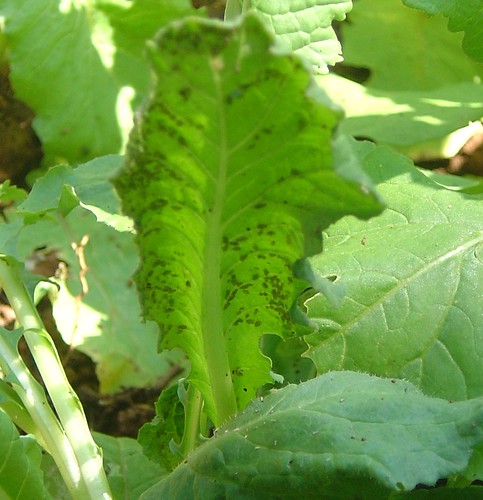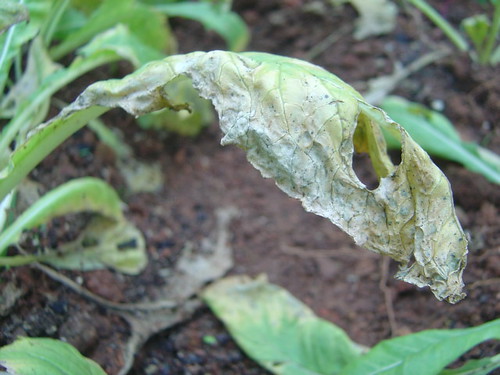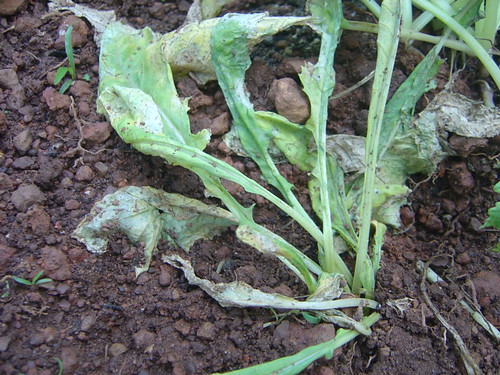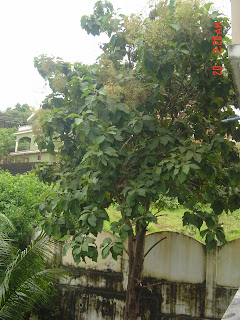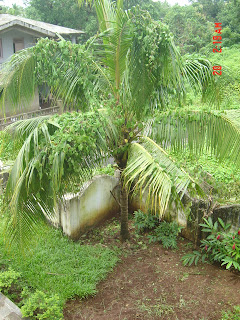What are aphids?
Aphids,also known as "plant lice", are pear-shaped, tiny (less than 1/8 inch in length), green/yellow/black insects that are found usually on the underside of leaves or along stems.
Aphids are sucking insects that draw great quantities of sap, causing leaves and stems to become discoloured and eventually distorted. Some plant sap is excreted as honeydew, which makes the plant sticky and attracts other insects like ants.
Wikipedia and What's that Bug have more reading material and photos that can help identify aphids and their species and You Grow Girl provides some recipes on how to treat an aphid attack.
In the case of the radish plot there were several ants around the infested plants, but I also found spiders and several webs along the soil!
I noticed the aphids on the 18th of Nov, but I took too long in acting on it. It was only on the 27th Nov (10 days later) that I began the treatment but alas! that was too late.
Here is what I was asked to do:
Take some tobacco (khaini -the non-peppermint type - it shouldnt cost more than a few rupees)Dunk 1/2 a teaspoon in 2 cups of water. steep overnight.Strain the juice and dilute 1:3 and use a spray to wetten the plant.Do this in the morning or the evening, once a day for a week or so.
Lessons:
1. Act FAST when your garden/crop is infested or diseased
2. Follow instructions about pest management

